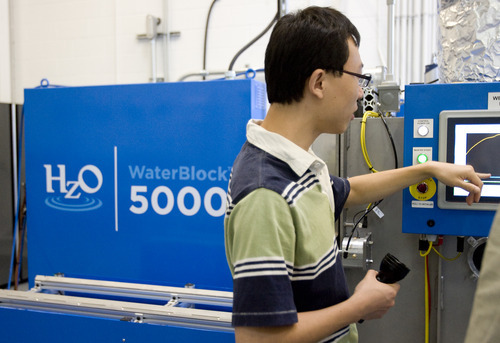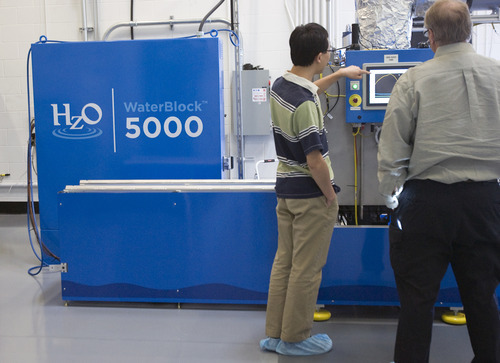This is an archived article that was published on sltrib.com in 2012, and information in the article may be outdated. It is provided only for personal research purposes and may not be reprinted.
Turns out cellular phone users will have to wait another year until they can drop their devices into toilets without worry.
Draper-based HzO Inc. excited the tech world in January at the Consumer Electronics Show when it unveiled WaterBlock. The product deploys inside a gadget to form a protective sealant around the electronics.
In the glow of the show, the company initially announced WaterBlock would hit the marketplace this summer. But then reality intervened, and now HzO president and CEO Paul Clayson says consumers will have to wait until 2013.
"We are in deep discussions with electronics companies around the world," he said. "We have some accounts and contracts signed, and more are in the works. It takes a lot of work to put this into the manufacturing lines and products."
Clayton would not say which manufacturers were among the more than 220 companies that expressed interest in the proprietary chemical formulation, but predicted that by this time next year a large portion of phones will be waterproof.
WaterBlock won an innovations design and engineering award from the CES, and videos from the company's YouTube channel have attracted more than 70,000 combined views.
WaterBlock works on the molecular level, bonding to the electronics within the phone. It is released as a gas into the device during assembly. The molecules layer themselves on top of the electronics within, creating a waterproof bonding. Clayson said testing has shown the product will not wear away and should last the life of a phone.
HzO has fielded interest not just from phone and tablet manufacturers, but from numerous other companies and organizations interested in waterproofing their products. Manufacturers from fishing and health-care industries, and even the U.S. military, have inquired about WaterBlock. Because of the chemical process required, it is not available for the public to purchase directly.
"Some of the applications that came to us are things we never really considered," Clayson said. "Consumer electronics are the focus for us, but there are other areas that have emerged."
WaterBlock's delayed debut can be traced to the amount of time the prototype process takes and to how it will be inserted into an assembly line process, Clayson said. He added that his company has developed equipment that will be delivered to manufacturers to equip upward of one million phones per day with WaterBlock.
"This requires engineering right at the manufacturing level," Clayson said. "That takes months of planning at facilities."
Any increase in costs to waterproof devices will be decided by the manufacturer. Clayson said the cost of the coating "will not be prohibitive to any consumer on any device."
For now, consumers will just have to remain cautious when devices are near liquids, leaving many to rely on a bag of rice to repair a water-damaged device.
"We fully understand that [frustration]," Clayson said. "All we can say to consumers is to sit tight, and help is on the way."







